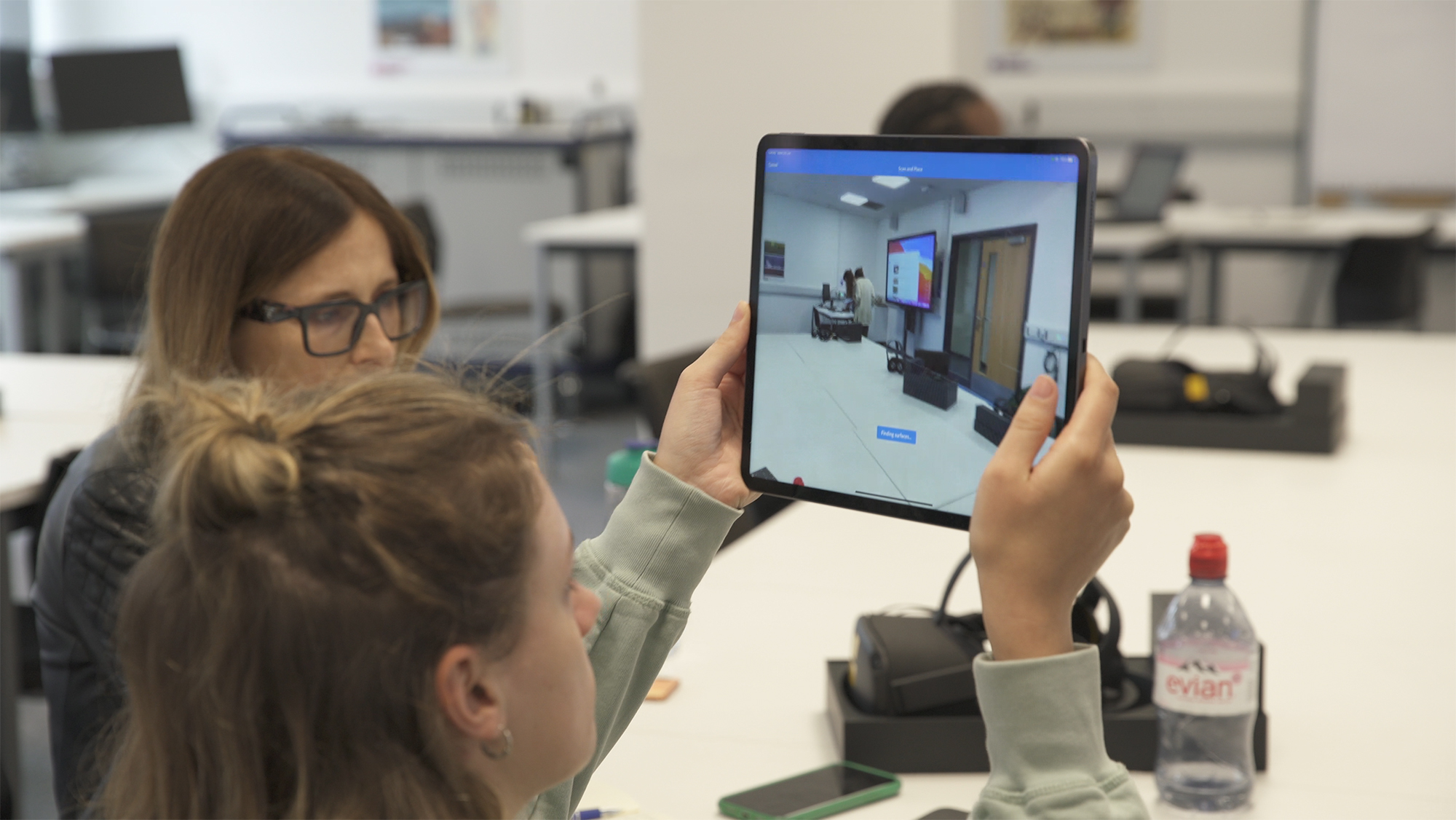5G Bootcamp: Inspirations and Next Steps
21 September 2022
A look at the digital projects that have inspired us following Coventry University's 5G bootcamp

After taking part in Coventry University’s 5G Bootcamp over the summer, we’ve now begun developing our own ideas for how to use 5G technology creatively within our museum.
We were particularly interested in looking at how we might be able to offer digital access to items from our collection which are not currently on display. We settled on AR (augmented reality) as an ideal tool for this since it could:
- Increase the number of people we could reach, enabling visitors to access the technology from their own mobile devices, rather than the limited number of people who would be able to use kit owned by the museum
- Interact with physical displays, adding an extra layer or dimension to temporary exhibitions by highlighting hidden objects that speak to the same stories or themes
- Be flexible and adapt to other activities and events happening within the museum, taking up limited physical space and having the potential for markers to be moved around as required.
Here are a few of the existing projects that have been inspiring us so far:
1) Heritage Storeys: Coventry’s Icthyosaur
Developed by Metro-Boulot-Dodo in partnership with the Herbert, this 360 VR experience delves into the back story of our ichthyosaur fossil, as part of a wider project called Heritage Storeys. This felt like a great place to start in terms of thinking about the kinds of stories we might want to tell about our collection objects.
2) The Show Windows: Smartify content
From 2021-22, Coventry City of Culture Trust and Coventry BID collaborated on a public art project, filling city centre shop windows with a diverse range of artwork by local, national and international artists. An app called Smartify was used to provide additional interpretation and context for each of the works, including video interviews, written articles, audio pieces and more. We liked the simplicity of this tool; to access the digital content in situ, users simply scanned the artworks using the app. Another thing that appealed to us about Smartify was the fact that users could also access this content remotely, providing a window onto the works for those who may be unable to visit them in person. You can take a look at the content online here.
3) Revivre: Muséum national d’Histoire naturelle
This AR project from the Paris Natural History Museum brought to life extinct animals featured in their collections. We felt this tied in well with the icthyosaur experience we had already worked on, and with the Herbert’s extensive natural history collection. We’d love to see some of the fossils and taxidermied animals we have in storage leaping into life!
4) Skin and Bones: Smithsonian’s National Museum of Natural History
In a similar vein, this app saw natural history exhibits restored to a more lifelike state, fur, feathers and fins digitally layered onto animal skeletons to show what the animal would once have looked like.
5) Art of London: Augumented Art Gallery
A collaboration between the National Gallery, National Portrait Gallery and the Royal Academy of Arts, this virtual exhibition turned public spaces into art galleries, using AR technology to digitally display amazing artworks in places where they wouldn’t normally be seen. Unlike physical artworks, which often have to be stored and presented under carefully controlled conditions to prevent them being damaged over time, their digital counterparts were able to pop up just about anywhere, and we loved the versatility and playfulness of the markers designed for this experience.
6) Terracotta Warriors: The Franklin Institute
A digital showcase of sculptures from the famous Terracotta Army, one of the great things about this app is its rich interactivity, allowing users to manipulate the objects on their mobile phones. There’s something brilliantly tactile about this – almost as if you’re able to handle the physical objects themselves, enjoying views of them you might not be able to see in real space.
Want to find out more about Coventry University’s 5G initiative? On Thursday 29 September, you can join a free event where local arts organisations will be sharing some of their project ideas. The event will take place from 10am-1pm in the Ellen Terry building, and you can register on Eventbrite here.